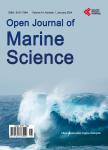Localization and Associative Strength of Acid Polysaccharides in Coccoliths of <i>Pleurochrysis haptonemofera</i>(Haptophyta) Predicted from Their Extractability from Partially Decalcified Coccoliths
Localization and Associative Strength of Acid Polysaccharides in Coccoliths of <i>Pleurochrysis haptonemofera</i>(Haptophyta) Predicted from Their Extractability from Partially Decalcified Coccoliths作者机构:Department of Applied Biological Chemistry Graduate School of Agricultural and Life Sciences The University of Tokyo Tokyo Japan Department of Applied Biological Chemistry Graduate School of Agricultural and Life Sciences The University of Tokyo Tokyo Japan Department of Biotechnology Akita Prefectural University Akita Japan School of Life Sciences Tokyo University of Pharmacy and Life Sciences Hachioji Japan School of Life Sciences Tokyo University of Pharmacy and Life Sciences Hachioji Japan 3Japan Science and Technology Agency CREST Tokyo Japan School of Life Sciences Tokyo University of Pharmacy and Life Sciences Hachioji Japan Faculty of Science and Engineering Waseda University Tokyo Japan
出 版 物:《Open Journal of Marine Science》 (海洋科学期刊(英文))
年 卷 期:2013年第3卷第1期
页 面:48-54页
学科分类:1002[医学-临床医学] 100214[医学-肿瘤学] 10[医学]
主 题:Acid Polysaccharide Calcification Coccolithophorid Localization Pleurochrysis haptonemofera Urea-Extraction
摘 要:The coccolithophorids have calcified scales called coccoliths on their surface that include abundant acid polysaccharides. To determine the localization and associative strength of acid polysaccharides Ph-PS-1, -2, and -3 incoccoliths of Pleurochrysis haptonemofera, we analyzed the acid polysaccharides extracted with urea from partially decalcified coccoliths. On treatment of coccoliths with8.0 Murea at pH8.0 inboiling water, Ph-PS-2 was not extracted, but parts of Ph-PS-1 and -3 were from the surface without the crystal morphology being affected. When coccoliths were partially decalcified at various pHs (pH 8.0 - 5.0), Ph-PS-1, -3, and -2 were extracted with urea in that order as the calcite crystals dissolved. Detection of the acid polysaccharides using fluorescein-isothiocyanate-labeled lectin (ConA) and anti-Ph-PS-2 antibodies demonstrated that Ph-PS-2 exists on the surfaces of both untreated and urea-treated coccoliths. Moreover, NaClO-treatment under moderate conditions extracted only Ph-PS-1, -3, and part of Ph-PS-2 from coccoliths, without separation of the crystal units, suggesting that at least some part of Ph-PS-2 acts as a glue connecting crystal units and/or a crystal unit and a base plate inside coccoliths. These results suggest that Ph-PS-2 exists not only on the surface but also inside of the coccoliths, most of it being strongly bound to coccoliths, while Ph-PS-1 and -3 are weakly associated close to the coccolith surface, in that order from the surface. This strongly supports a scheme in which PS-2 type acid polysaccharides play an important role in the crystal nucleation and PS-3 type functions during crystal growth.



